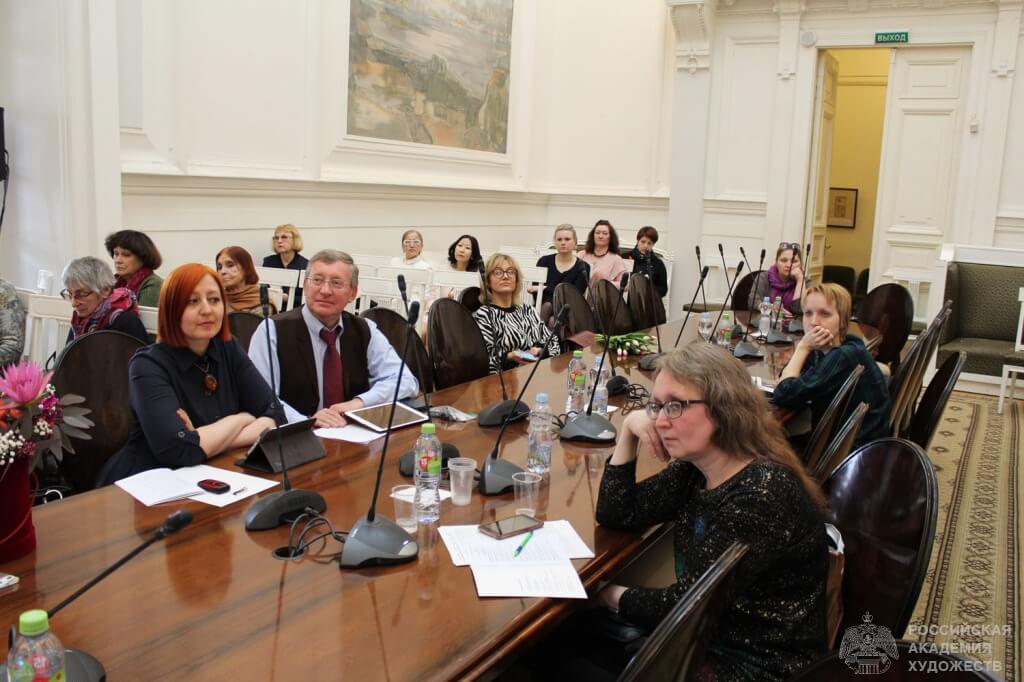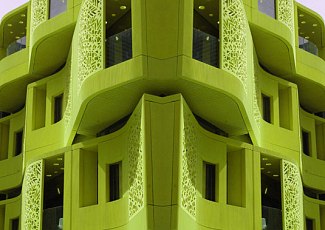Fidelity to the Culture
Main goals of sustainable development enunciated during UN Global Assembly, the concluding of Paris Agreement in 2015 are events that formed constructive development trends for the Planet.
On April 17-19, 2019 in the Russian Academy of Arts, in Moscow, was held an International scientific conference “The Image of the City in the Art”.
Striving for the new and asserting the dignity of contemporary Russian art in the world, the Russian Academy of Arts preserves its traditions and the historically established structure, making a huge contribution to the worldwide cultural space development. In 1998, at the Academy was established the Unesco department, which seeks to generalize the importance of art education as a platform for sustainable development, the development of creativity, innovation and cultural range.
The range of reports presented at the conference differed in the breadth of thematic coverage: from “The image of the city in Arabic manuscripts” (Starodub.T.H.), “Jerusalem in painting of the Early Italian Renaissance” (Belousov.S.L.) to “The image of the city in Dutch painting of the XII century” (Koroleva.A. Y), as well as an interdisciplinary approach: reports were presented not only from the field of fine arts, but also from cinema, theater, literary and musical discoveries.
The conferences as in Russian Academy of Art are not only an opportunity for communication between colleagues “in the workshop”, a platform for the exchange of interesting information, but, most importantly, one of the main ways to preserve the cultural heritage that now requires its particular attention. As Renato Guttuso once wrote: “Fidelity to the culture itself was already an anti-fascist protest.”
At the conference the coordinator of the project “Art for Sustainable Development” of the International green technologies and investments projects Center A. Ismailova presented a report “Green Art Projects: The Impact of Art to Urban Space and Changing the citizen modus vivendi”.
Created in 2018 as a legacy of the Expo- 2017, the International green technologies and investments projects Center under the guidance of Expo- 2017 Commissioner R. Zhoshybayev considers one of its activities to create green, art projects: art projects for sustainable development. The Center is just starting its activities in this area and hopes that the projects of the Center will be able to transform our capital space, Kazakhstan and worldwide, and change the thinking to the “green”, non-aggressive and contemplative way.
In 2016, at the Global Salzburg Seminar of Culture and Sustainable Development, one of the plenary sessions was called: Artists inspiring change. As Unesco General Director Irina Bokova noted in her speech in Hanjou: “Culture allows for sustainable development, because it is a source of strength, values, social integration and participation of people in society. Culture is the driving force of creativity and renewal.”
Artists and creators always sought to change the world and life for the better, transforming it and translating their ideas into reality. Despite restrictions and obstacles, it always remained a vivid memory in the history of mankind, and was another energy ray in the energy of creation, which does not disappear, but gradually and purposefully transforms the world and reality around. The presence of the artist transforms the urban landscape, makes it better, inspires.
The great Leonardo da Vinci dreamed about building an ideal capital: there was a project of the Great Master for King Francis I of France. Leonardo da Vinci supervised large fortification and irrigation works, he is fond of plans for building grand canals, cleaning harbors, rebuilding cities. In his project of an ideal capital, he completely abandons the medieval model of the city with narrow, tangled streets. His “new city” is spacious, multi-tiered. The project of Leonardo da Vinci did not realized, but his ideas spread over the time.
The urban projects by Gaudi, Salvador Dali, Tonino Guerra are bright indicators of the influence of artistic reality on the surrounding reality, interactions and incarnations of artistic symbols and premonitions. Wim Wenders in his film "Notes about the cities", which was making in the late 90s, marked a great crisis of urban existence and a need for change. At the third World Forum of UNESCO on Culture and Cultural Industries, Culture and Art are proclaimed as the main drivers for change: “Urban and rural areas are true laboratories for sustainable development. Providing a central place for creativity and well-being in sustainable urban and rural planning allows to create a safer, more productive and highly organized urban environment.” The Florence Declaration, which was proclaimed at the Forum, emphasizes: “Creativity contributes to the making of open, socially inclusive and pluralistic societies in which various sources of inspiration and innovation have free flow and support.”
The demands and premonitions of the new century create a new trend in modern art — green, art projects: projects in art, cinema, literature, music, aimed at interacting with the surrounding reality, changing reality in creative ways and transforming the old way of life into a completely new one for the needs of new century. The cultural initiatives that international organizations are creating: such as UNESCO, IFACCA (International Federation of Arts Councils and Cultural Organizations), ASEF- Asia-Europe Foundation, British Council, UNDP are becoming increasingly effective and changing of reality.
The UNESCO Network of Creative Cities is an experiment that changes the idea about urban space and citizens. The network meeting in 2017 was held under the title: “Creativity in the interests of sustainable urban development: creating inclusive public spaces in the digital time.” The network is an attempt to restart urban thinking: “A creative city is not a trend, it is a reality, it is a way to promote sustainable development, which begins from social integration. To implementation of the UN Sustainable Development Goals, we need culture and creativity,”- noted the participants of the Network meeting.
Green art projects contribute not only to a gradual change in urban space, they change the citizens’ modus vivendi, transforming it into an eco-friendlier lifestyle. “Aggressive non-contemplation”, which distinguishes urban citizens from different cities of the world, under the influence of art projects for sustainable development, will gradually change to “non-aggressive contemplativeness” - a new quality in the New Age, which will open the new discoveries.
After the Leonardo DiCaprio speech at UN, the attitude to green art projects is changing for understanding the value, importance and significance of the creative potential of Art people.
One of the most significant events in recent years, bringing together the art and scientific community-the Festival for the Earth, which holds HS Prince Albert II and contemporary artist Maria Rebecca Ballestra. The Festival for the Earth was conceived as an art project that will promote social, scientific, economic transformation through creativity and culture. In 2018, the focus of the Festival for the Earth was on climate change, economic opportunities associated with a sustainable future, accelerating the transition, contributing to the development of environmentally friendly culture.
Co-organizer of the Festival for the Earth- artist Maria Rebecca Ballestra is one of the creators of green, art, world projects. In 2014 she begun the project Journey into Fragility. The composition of the “Green city” from the project is dedicated to the City of the Future- Masdar City, which will operate 100% on renewable energy sources. The composition consists of graphics, accompanied by modern, Arab poems.
The art influence on the urban space and the modus vivendi of the citizens also occurs through the creative-analytical laboratories that are created at the mayors of the big cities worldwide. A striking example is the artist and the director of creative analytical laboratory at the mayor's office of Mexico City-Gabriella Gomez Mont. She and her colleagues are trying to change the spiritual climate of the City.
During the signing of the Paris Agreement on COP21, artists, seeking to support this initiative, held the Art COP21-initiative, which continued until 4 months and consisted of 550 art-events, in which 250 artists took part.
The Green Art is not only a new trend of modern art creating images and symbols of new age and new reality, but also an art of action spreading new ideas of ecological thinking. Associative method of introduction to ecological ideas may be difficult to initial understanding, but it is able to change thinking drastically.
The City of the Future is a city of creativity, with the creative people of the New Century, writing a new, history of the Planet.
Ayim Ismailova
Astana
Kazakhstan
IGTIC
Coordinator of the Art for Sustainable Development Project supported by IGTIC
+7 705 330 9767
aismailova@yahoo.com
www.ayimcinema.blogspot.com
Fidelity to the Culture
Менеджеры компании с радостью ответят на ваши вопросы, произведут расчет стоимости услуг и подготовят индивидуальное коммерческое предложение.
12 June 2019
Оформите заявку на сайте, мы свяжемся с вами в ближайшее время и ответим на все интересующие вопросы.


